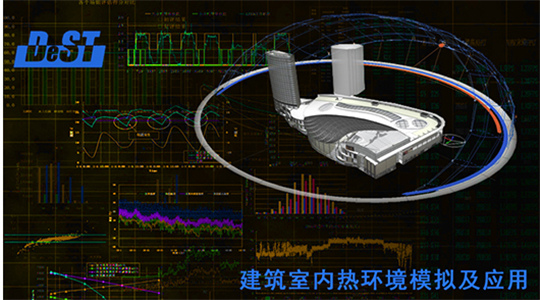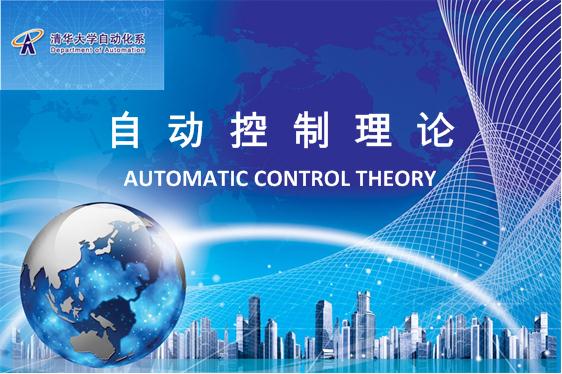
当前课程知识点:Fundamentals of Inorganic Materials Science > 9 Sintering > 9.5 Grain growth and secondary recrystallization > 9.5.1 Grain growth
返回《Fundamentals of Inorganic Materials Science》慕课在线视频课程列表
返回《Fundamentals of Inorganic Materials Science》慕课在线视频列表
同学们好!今天我们学习
烧结过程中两个非常重要的现象,
晶粒生长与二次再结晶。
首先来看一下概念。
晶粒生长指的是,
在材料的热处理或烧结过程中,
平均晶粒连续增大的一个过程。
二次再结晶是相对于初次再结晶命名的,
那什么是初次再结晶呢?
它指的是,
在已经发生塑性形变的基质中,
出现新生的无应变晶粒的成核长大过程。
该过程的推动力是,
基质发生塑性变形所增加的能量。
初次再结晶现象在金属中较为常见,
主要是由于无机材料在热加工时塑性形变较小。
那么二次再结晶指的是
晶粒异常生长或者晶粒不连续生长,
即少数巨大晶粒在细晶消耗时的成核长大过程。
这是概念上的区别。
我们接下来讨论晶粒生长。
首先我们来看晶粒生长的示意图。
左图表示了两个晶粒之间的晶界结构。
弯曲晶界两边各有一个晶粒,
一个个小圆圈代表的是各个晶粒中的原子。
对于凸面晶粒表面A处,
是正曲率,且自由能比较高。
而在凹面晶粒表面B处,
是负曲率,自由能较低。
因此,位于A晶粒内的原子必然有
向能量低的B晶粒自发跃迁的趋势。
那么相应地,晶界就向着A晶粒的曲率中心不断推移,
那也就意味着B晶粒发生了长大。
由此可见,晶粒生长的实质是,
晶界移动的结果,
而不是简单的小晶粒之间的互相粘结。
晶粒生长的快慢取决于晶界移动的速率。
因此,晶粒生长的推动力就是
晶界两边物质的自由能之差,
即晶界过剩的界面能。
晶粒可以无限制地生长吗?
晶界移动到什么时候为止呢?
那肯定是推动力为0的时候,
也就是当晶界平直化,
界面两侧自由能相等的时候,
没有能量差,晶粒就停止生长了。
所以我们用晶界移动速率来表示晶粒生长速率。
它主要与哪些因素有关呢?
晶界移动速率可以用以下公式来表示,
它是随着温度的升高成指数规律增加。
可以看出晶界移动速率主要取决于,
晶界曲率以及系统温度。
温度越高,
曲率半径愈小,
晶界向其曲率中心移动的速率就会加快。
P4:我们来看多晶体晶界的移动情况,
如左图所示。
晶界上有界面能的作用,
因此晶粒会形成一个与肥皂泡沫相似的三维阵列。
理想情况下边界上的表面能是相同的,
界面夹角成120度,
晶粒成正六边形。
然而实际多晶系统中,
多数晶粒间界面能不相等。
因此晶界都具有一定曲率,
由于表面张力作用,
晶界向其曲率中心移动。
从图中可以看出,
大于六条边的晶粒边界是向内凹的,
这些晶粒可以继续长大,
十边形和五十边形尤其明显,
而且容易发生二次再结晶现象。
而小于六条边的晶粒会缩小甚至消失。
六边形晶粒不发生长大。
总的结果是平均晶粒增长。
而且在晶界上总是分布着第二相夹杂物,
它们会阻碍晶界移动,
起到钉扎的作用。
晶粒长大的平均速率可以用此方程来表示。
可以得到,
生长后的晶粒尺寸和起始晶粒尺寸的平方差,
与生长时间t成正比。
我们对这个式子进行变形,
如果以logt为横坐标、logD为纵坐标,
作图得到直线,它的斜率是1/2。
这其实是非常理想的情况下,
晶界非常干净,没有气孔和杂质。
然而一些氧化物材料的晶粒生长实验表明,
直线的斜率常常在1/2-1/3之间,
而且经常还更接近于1/3。
主要原因是实际晶界移动时,
遇到杂质或气孔而限制了晶粒的生长。
此图为遇到夹杂物时的晶界移动示意图。
晶界为了通过夹杂物,
会消耗一部分能量,
界面能就被降低,
降低量正比于夹杂物的横截面积。
通过障碍以后,
弥补新的界面又要消耗能量。
结果使界面继续前进的推动力减弱,
界面变得平直,
晶粒生长速率减缓。
随着烧结的进行,
气孔往往位于晶界上,
或三个晶粒交汇点上。
气孔是随晶界移动还是阻止晶界移动呢?
这与晶界的曲率大小有关,
还与气孔的直径和数量、
气孔作为空位源向晶界扩散的速度、
气孔内气体压力大小、
以及包围气孔的晶粒数等等因素有关。
当气孔汇集在晶界上时,
晶界移动会出现以下情况,如图所示。
可以看出晶界上或多或少分布着气孔。
在烧结初期,
温度较低,
晶界能量较小,
晶界上气孔数目又很多,
会阻碍晶界移动。
我们用Vb来代表晶界移动速率,
Vp为气孔移动速率。
此时气孔阻止晶界移动,
因此Vb=0,也就是图(A)这种情况。
在烧结中、后期,
如果烧结温度控制适当,
气孔会逐渐减少,
尤其是当Vb=Vp时,
从从图(B)可看出,晶界会带动气孔一起移动,
使气孔保持在晶界上,
最终可以利用晶界这个快速通道而逸出。
第3种情况如图(C)所示,
如果再继续升高温度,
晶界移动速率呈指数增加,
必然导致Vb>>Vp。
晶界会越过气孔而向曲率中心移动,
气孔会被留在晶体内部。
致密度也不再增加,
那也就会出现二次再结晶现象,
会严重影响材料的各种性能。
因此,烧结中控制晶界的移动速率是十分重要的。
以上三种情况中,要避免出现第3种情况。
也就是说,当晶界移动速率太大时,
对烧结体的致密化是不利的。
因此,可以采取一些措施
来控制晶界移动速率,
使其和气孔移动速率相等。
第一要严格控制温度。
如果温度过高,
那晶界移动速率太快,
晶粒会出现异常生长。
而且气孔移动速率慢,
会留在晶粒内部,
然后形成闭气孔。
第二点是采取措施,
使晶界上出现少量液相。
此时,
界面移动的推动力降低,
扩散距离增加。
因此少量液相可以起到抑制晶粒长大的作用。
例如,95% Al2O3烧结时,
可加入少量石英、粘土,
使之产生少量硅酸盐液相,
可以阻止晶粒异常生长。
但当坯体中有大量液相时,
反而会促进晶粒生长和出现二次再结晶。
那么此处出现一个问题,
为什么坯体的实际密度和理论密度存在差异?
晶粒生长是否无止境的呢?
首先气孔在烧结过程中能否排出,
除了与晶界移动速率有关外,
还与气孔内压力的大小有关。
随着烧结的进行,
气孔逐渐缩小,
而气孔内的气压不断增高。
当气压增加至2γ/r时,
注意这个值刚好与烧结推动力大小相等,
即气孔内气压
等于烧结推动力,
此时烧结停止。
如果继续升高温度,
气孔内的气压大于2γ/r,
这时气孔不仅不能缩小,反而膨胀,
对致密化不利。
烧结时如果不采取特殊措施,
是不可能达到坯体完全致密化的。
因此,想要获得密度接近理论值的制品,
必须采用一些特种烧结方式,
比如气氛烧结、真空烧结
和热压烧结等。
晶粒的生长不是无止境的,
存在一个极限尺寸。
Zener对极限晶粒直径Dl作了粗略的估计。
式中d是夹杂物或气孔的平均直径,
f是夹杂物或气孔的体积分数。
Dl在烧结过程中是随d和f的改变而不断变化的。
当f一定时,
d愈大,气孔或夹杂的数量就越少。
则晶界移动时,
与夹杂物相遇的机会愈小,
于是晶粒长大而形成的平均晶粒尺寸很大。
在烧结初期,
坯体内小气孔数量多,
因而f相当大,
此时,晶粒的起始尺寸D0总大于Dl,
这时晶粒不会长大。
这时晶粒不会长大。
这时晶粒不会长大。
随着烧结的进行,
小气孔不断沿晶界聚集或逸出,
气孔尺寸变大,
体积分数变小,
Dl也随之增大。
当Dl始终大于D0时,
晶粒开始均匀生长。
烧结后期,
气孔的体积分数达到10%时,
晶粒长大就停止了。
这解释了在普通烧结中,
坯体终点密度低于理论密度的原因。
坯体终点密度低于理论密度的原因。
-Test for chapter 1
-2.1 Type of defect
-2.2.1 The expression methods of point defects
--2.2.1 The expression methods of point defects
--2.2.1 The expression methods of point defects
-2.2.2 The rules for writing of defect reaction equation
--2.2.2 The rules for writing of defect reaction equation
--2.2.2 The rules for writing of defect reaction equation
-2.3 Calculation of thermal defect concentration
--2.3 Calculation of thermal defect concentration
--2.3 Calculation of thermal defect concentration
-2.4 Non-stoichiometric compounds
--2.4 Non-stoichiometric compounds
--2.4 Non-stoichiometric compounds
-Homework for chapter 2
-Test for chapter 2
-3.1 The classification of solid solutions
--3.1 The classification of solid solutions
--3.1 The classification of solid solutions
-3.2 Substitutional solid solution
--3.2 Substitutional solid solution
--3.2 Substitutional solid solution
-3.3 Interstitial solid solution
--3.3 Interstitial solid solution
--3.3 Interstitial solid solution
-3.4 The research method of solid solutions
--3.4 The research method of solid solutions
--3.4 The research method of solid solutions
-3.5 Questions for crystal imperfection and solid solution
--Questions for crystal imperfection and solid solution
-Homework for chapter 3
-Test for chapter 3
-4.1 Melt structure
-4.2 The properties of the melt
--4.2.1 The properties of the melt_viscosity
--4.2.2 The properties of the melt_surface tension
--4.2 The properties of the melt
-4.3 The characteristics of glass
--4.3 The characteristics of glass
--4.3 The characteristics of glass
-4.4 The formation of glass
--4.4.1 The formation of glass_kinetics conditions
--4.4.2 The formation of glass_crystal chemical conditions
-4.5 The structure of glass
-4.6 The typical glass
-4.7 Questions for melt and glass
--Questions for melt and glass
-Test for chapter 4
-5.1 Phase equilibrium in silicate systems
--5.1 Phase equilibrium in silicate system
--5.1 Phase equilibrium in silicate system
-5.2 One-component system phase diagram
--5.2 One-component system phase diagram
--5.2 One-component system phase diagram
-5.3 Applications of one-component diagrams
--5.3 Applications of one-component diagrams
--5.3 Applications of one-component diagrams
-5.4 Binary diagrams
--5.4.1 Binary diagram with eutectic point
--5.4.2 Binary system with a congruent melting compound and one with an incongruent melting compound
--5.4.3 Other five types of phase diagrams of binary systems
-5.5 Applications of binary phase diagrams
--5.5 Applications of binary phase diagrams
--5.5 Applications of binary phase diagrams
-5.6 Ternary diagrams
--5.6.1 Representation of ternary system composition
--5.6.1 Representation of ternary system composition
--5.6.2 Three-dimensional state diagram and plane projection diagram of a simple ternary system
--5.6.2 Three-dimensional state diagram and plane projection diagram of a simple ternary system
--5.6.3 (1) Basic types of ternary phase diagrams
--5.6.3 (2) Basic types of ternary phase diagrams
--5.6.3 (3) Basic types of ternary phase diagrams
--5.6.3 Basic types of ternary phase diagrams
-5.7 Applications of ternary phase diagrams
--5.7 Applications of ternary phase diagrams
--5.7 Applications of ternary phase diagrams
-5.8 Research methods of phase equilibrium
--5.8 Research methods of phase equilibrium
--5.8 Research methods of phase equilibrium
-5.9 Questions for phase equilibria
--Questions for phase equilibria
-Homework for chaper 5
-Test for chapter 5
-6.1 Overview of diffusion
-6.2 The kinetic equations of diffusion
--6.2 The kinetic equations of diffusion
--6.2 The kinetic equations of diffusion
-6.3 The thermodynamic equation of diffusion
--6.3 The thermodynamic equation of diffusion
--6.3 The thermodynamic equation of diffusion
-6.4 Diffusion mechanisms and diffusion coefficient
--6.4 Diffusion mechanisms and diffusion coefficient
--6.4 Diffusion mechanisms and diffusion coefficient
-6.5 Diffusion in solid
-6.6 Factors affecting diffusion
--6.6 Factors affecting diffusion
--6.6 Factors affecting diffusion
-6.7 Questions for diffusion
-Homework for chaper 6
-Test for chapter 6
-7.1 Overview of solid state reactions
--7.1 Overview of solid state reactions
--7.1 Overview of solid state reactions
-7.2 Kinetic equation of solid state reaction
--7.2 Kinetic equation of solid state reaction
-7.3 Factors affecting the solid state reaction
--7.3 Factors affecting the solid state reaction
--7.3 Factors affecting the solid state reaction
-Homeword for chapter 7
-8.1 The categories of phase transformation
--8.1 The categories of phase transformation
--8.1 The categories of phase transformation
-8.2 Crystallization
--8.2.1 Crystallization thermodynamics
--8.2.2 Crystallization kinetics
-8.3 Phase Separation of glass
--8.3 Phase separation of glass
--8.3 Phase separation of glass
-8.4 Questions for phase transformation
--Questions for phase transformation
-Test for chapter 8
-9.1 Overview of sintering
-9.2 The driving forces and models of sintering
--9.2 The driving forces and models of sintering
--9.2 The driving forces and models of sintering
-9.3 Solid state sintering
--9.3.1 Evaporation-Condensation mass transfer
--9.3.2 Diffusion mass transfer
-9.4 Liquid phase sintering
--9.4.2 Solution-Precipitation mass transfer
-9.5 Grain growth and secondary recrystallization
--9.5.2 Secondary recrystallization
--9.5 Grain growth and secondary recrystallization
-9.6 Factors affecting sintering
--9.6 Factors affecting sintering
--9.6 Factors affecting sintering
-9.7 Questions for sintering
-Homework for chapter 9
-Test for chapter 9







